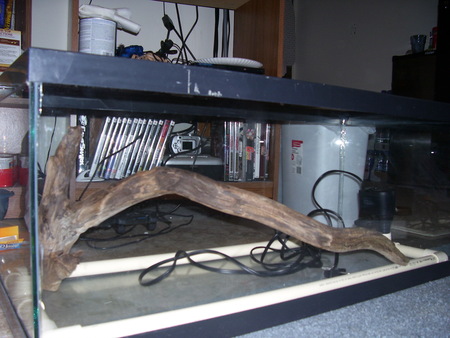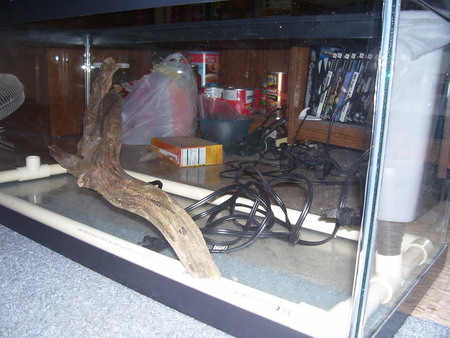Starting a 45g, I want to add darters and need a current.
#21
 Guest_steve_*
Guest_steve_*
Posted 02 April 2012 - 02:21 PM
I can see some advantages to the flow loop with the sponges if you are using bacterial nitrification for biological filtration. Depending on the sponge size, this could be the only filtration you need as it would do both biological and mechanical filtration. If you're planning on a different method of filtration then, from my experience, it literally isn't going to matter to your darters what size pump or how high of flow rate you go with.
If you're looking for specific numbers; I've got two 382GPH pumps in a 55 gallon riffle tank and a 692GPH pump in a 75 gallon riffle/pond tank.
#22

Posted 02 April 2012 - 03:25 PM
(My bachelor's degree is in chemical engineering)
I knew that, and that's why I asked you the question... wanted you to think that way, not just as an aquarist. I am an engineer as well and have always thought that the resistance would be an issue... but not really a fluids guy, so always just wondered. Would still be an interesting question... what diameter PVC do you need to not restrict the flow if you want the flow to be 1200 GPH? Or any other GPH that you miight have a pump for.
I have never put pumps on the opposite sides/corners/whatever of a tank, but kind of like that idea... much better and much simpler in my mind than the extra plumbing.
#23
 Guest_Newt_*
Guest_Newt_*
Posted 02 April 2012 - 04:33 PM
#25
 Guest_Doug_Dame_*
Guest_Doug_Dame_*
Posted 03 April 2012 - 12:51 AM
I am an engineer as well and have always thought that the resistance would be an issue... but not really a fluids guy, so always just wondered. Would still be an interesting question... what diameter PVC do you need to not restrict the flow if you want the flow to be 1200 GPH? Or any other GPH that you miight have a pump for.
Since I don't want to barge into the Engineers' Party, I won't attempt to answer the question. But put this on your xmas lists, you both will enjoy it. (I think.)
===> P.R. Escobal - Aquatic Systems Engineering: Devices and How They Function - Selection, Installation, Operation.
Has formulas for friction loss in plumbing and everythin' !
(Ouch ... looks like it's going to be hard to find at a reasonable price.)
#26
 Guest_EricaWieser_*
Guest_EricaWieser_*
Posted 01 December 2012 - 03:21 PM
Picture: http://ecx.images-am...kL._SL1280_.jpg
Here's the link: http://www.amazon.co...d/dp/B002480V32
It turns out you can be all creative and design an awesome flow path and blah blah blah, or you can completely overpower everything with 1300 GPH of raw power. Either way makes a strong current. Who da thunk it.
#27
 Guest_gzeiger_*
Guest_gzeiger_*
Posted 02 December 2012 - 10:37 AM
What I would recommend for darters is a sump-based filtration system where you can direct the overflow in a way that splashes around a lot and aerates the water. It's convenient to place the overflow and the pump return on opposite ends of the tank to provide some current too.
Reply to this topic
1 user(s) are reading this topic
0 members, 1 guests, 0 anonymous users











